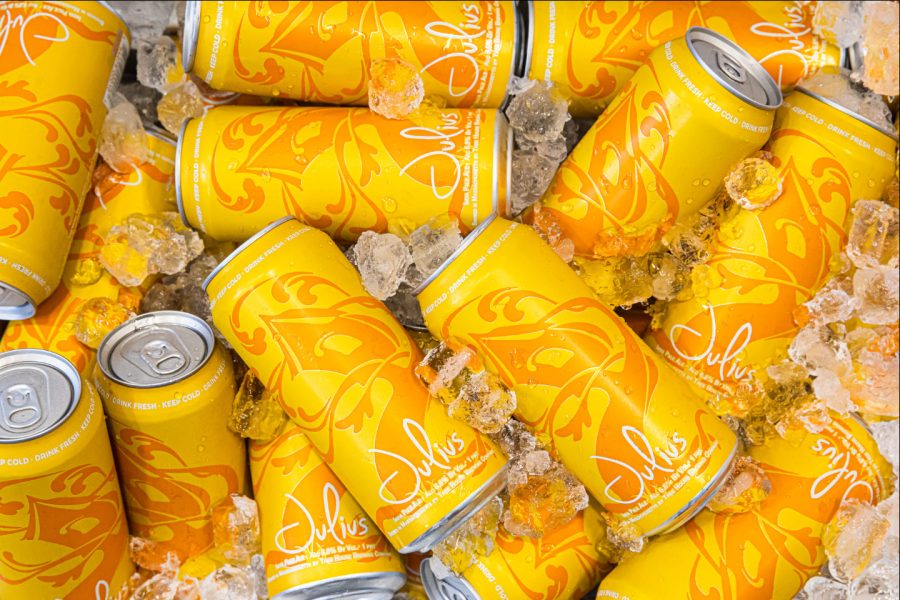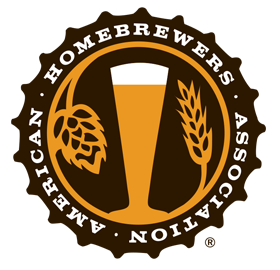

The following beer recipe is featured in the July/August 2019 issue of Zymurgy magazine. Access this issue along with the archives with Zymurgy Online!
AHA member Marshall Bishop loves Tree House Julius so much that he has devoted untold hours to developing a faithful homebrew clone, the recipe for which he has kindly shared with us. Marshall offers helpful advice for brewing this recipe.
Water chemistry, a specific combination of yeasts, plus acids and essential oils from the hops combine to give this beer its hazy appearance. Tree House doesn’t use flaked grains.
Minimizing calcium in the brewing water contributes a soft mouthfeel. Hard water ions such as magnesium and calcium can contribute chalky, thick sensations – if you want softness in a beer, start with soft water. Using canning salt (sodium chloride) provides chloride without adding calcium.
The long whirlpool at 108°F (42°C) extracts and retains volatile hop flavor and aroma compounds that would otherwise evaporate at higher temperatures. You can replace the whirlpool with a hop stand to maximize contact between hops and wort, but you will get the best utilization from constantly stirring during whirlpool.
Dried yeast has sufficient sterols for healthy fermentation, so there’s no need to aerate or oxygenate. You want to stress the yeast enough to encourage ester production. Esters and other complex fruity, yeast-derived flavors match perfectly with the hop-derived fruity flavors and aromas. Resist the temptation to round up the specified quantities of WB-06 and T-58 if you can’t measure less than one gram, as these will dominate the clean strain and add too much farmhouse character.
Pitching warm and then cooling the fermentation encourages ester production while retaining volatile aromatic compounds. You still want some yeast activity when adding the dry hops, more to prevent oxidation than for any biotransformation mumbo jumbo.
Dry hopping in a mesh bag is not recommended. You’ll get better wort contact by letting the pellet hops dissolve and float free in the primary. Cold crashing won’t clear the beer of hop/polyphenol haze, but it will settle yeast.
The following beer recipe is featured in the July/August 2019 issue of Zymurgy magazine. Access this issue along with the archives with Zymurgy Online!
AHA member Marshall Bishop loves Tree House Julius so much that he has devoted untold hours to developing a faithful homebrew clone, the recipe for which he has kindly shared with us. Marshall offers helpful advice for brewing this recipe.
Water chemistry, a specific combination of yeasts, plus acids and essential oils from the hops combine to give this beer its hazy appearance. Tree House doesn’t use flaked grains.
Minimizing calcium in the brewing water contributes a soft mouthfeel. Hard water ions such as magnesium and calcium can contribute chalky, thick sensations – if you want softness in a beer, start with soft water. Using canning salt (sodium chloride) provides chloride without adding calcium.
The long whirlpool at 108°F (42°C) extracts and retains volatile hop flavor and aroma compounds that would otherwise evaporate at higher temperatures. You can replace the whirlpool with a hop stand to maximize contact between hops and wort, but you will get the best utilization from constantly stirring during whirlpool.
Dried yeast has sufficient sterols for healthy fermentation, so there’s no need to aerate or oxygenate. You want to stress the yeast enough to encourage ester production. Esters and other complex fruity, yeast-derived flavors match perfectly with the hop-derived fruity flavors and aromas. Resist the temptation to round up the specified quantities of WB-06 and T-58 if you can’t measure less than one gram, as these will dominate the clean strain and add too much farmhouse character.
Pitching warm and then cooling the fermentation encourages ester production while retaining volatile aromatic compounds. You still want some yeast activity when adding the dry hops, more to prevent oxidation than for any biotransformation mumbo jumbo.
Dry hopping in a mesh bag is not recommended. You’ll get better wort contact by letting the pellet hops dissolve and float free in the primary. Cold crashing won’t clear the beer of hop/polyphenol haze, but it will settle yeast.
Ready to brew? Unlock unmatched resources, validated recipes, and more benefits when you become an AHA member. Join Now
Ready to brew? Unlock unmatched resources, validated recipes, and more benefits when you become an AHA member.
Join for $4.99Already a member? Login here




